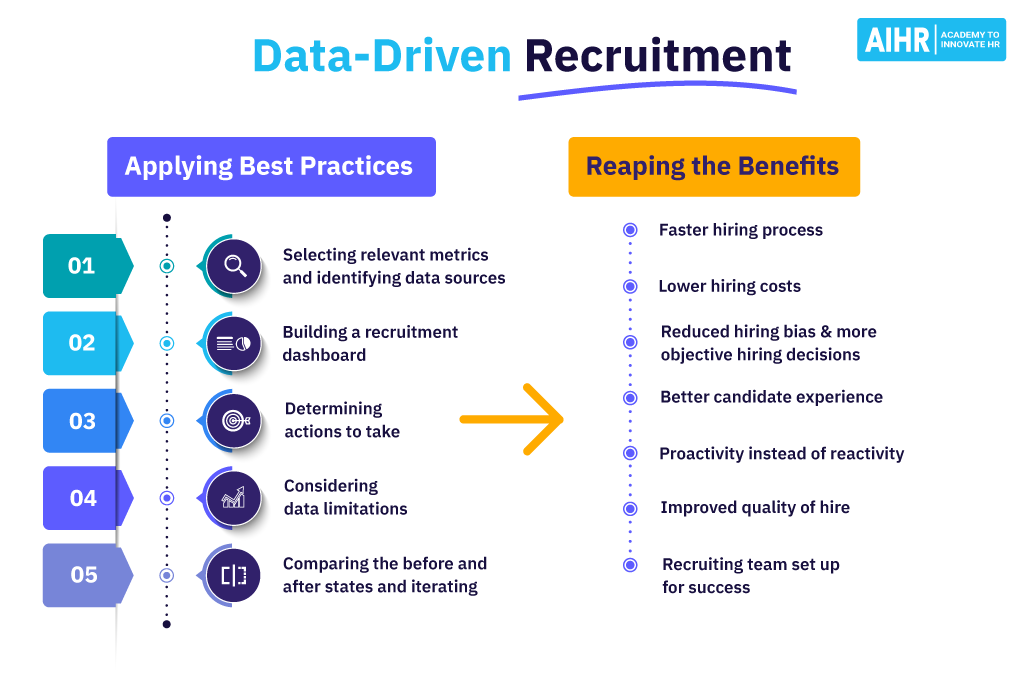The most common recruitment challenges and how to overcome them
Published

These days, recruitment is a real challenge. With smaller teams and smaller budgets, it's even more difficult - but with the same expectations for results. We outline some of the most common recruitment challenges you might face in your work - and give tips on how to overcome them.
If you had to name one thing as your biggest recruitment problem, what would it be? It's true that your answers may vary depending on the size of the company you're working with or the type of roles you're filling. But most recruiters would focus on a few common hiring challenges.
1. Attract the right candidates
If you've ever tried to find the right candidate in a pool full of unqualified talent, you know that your options are limited. You go for the best person you can find at the time - not the one who is best suited for the job. But it's not always about the number of applicants; the best way to hire the right people is often to choose from a smaller group of qualified talent.
Tip: Make the requirements clear in your job advertisements and give a brief overview of the role. Use an application form with "knock-out" questions to address your key concerns directly. For example, do you need someone with a clean driver's license? Include a yes/no question asking applicants if they have one. This way you can quickly weed out those who are not suitable for the job.
2. Approach qualified applicants
Good candidates are often contacted regularly by recruiters, making it harder for your own email to stand out. What's more, candidates with hard-to-find qualifications often consider multiple job offers at the same time. So you need to make an extra effort to convince passive candidates to choose your company over your competitors.
Tip: Before contacting a passive candidate, find out what motivates them and what makes them happy in their job. With this knowledge, you can personalize your sourcing emails and describe what you can offer them rather than what they can do for your company.
3. Quick adjustment

Source: kilchenmann.ch
Hiring teams want to hire as quickly as possible because unfilled positions cost money and delay operations. However, depending on the industry, hiring can take several months, which puts pressure on recruiters and frustrates hiring teams. A long hiring timeline can be a byproduct of a lack of qualified applicants. The hiring process can take too long, or hiring teams can't come to an agreement, resulting in the best candidates finding jobs elsewhere.
Tip 1: Look at your hiring process and ask yourself: Are all the hiring steps really necessary? Are we looking in the right places to fill our candidate pipelines? Are we communicating quickly with candidates and with each other? All of these questions can be answered with the help of hiring metrics from your Applicant Tracking System (ATS).
Tip 2: If you are filling hard-to-fill positions, it is normal that it sometimes takes a long time to fill a position. Explain this to hiring teams and set expectations early. Let them know what a realistic timeframe is and emphasize the importance of being diligent when filling positions where a bad hire can cost a lot of money.
4. Datengestützte Rekrutierung

Data-driven hiring - Source: aihr.com
Organizations can use hiring data and metrics to continuously improve their hiring process and make more informed decisions. However, collecting and processing data can be tedious. Spreadsheets are one way to collect hiring data, but they require manual labor, are prone to human error and are not compliant with regulations. This makes it difficult to accurately track data and trends. Hiring teams need ways to compile and organize data efficiently and streamlined.
Tip: With systems like an ATS, Google Analytics or recruitment marketing software, you can store data and export helpful reports. You don't have to collect every single recruitment metric. Talk to management to agree on a few metrics that make sense for you and your company.
5. building a strong employer brand
A good employer brand helps you to attract and retain better applicants. Companies that invest in employer branding are three times more likely to hire good employees. However, it's a complex process that involves everything from ensuring a positive candidate experience to promoting your culture on social media. It's an ongoing, collective effort that requires you to step outside of your usual duties and secure the support of your employees.
Tip: Always respond (politely) to online reviews - bad and good. Give your employees the opportunity to report on their work and what they like (e.g. through blogs and videos). And above all, be a good employer and it will show.
6. Ensuring a good applicant experience
Candidate experience is not only important for employer branding, but is also a factor when your best candidates are evaluating your job offers. The way you treat applicants during the hiring process reflects the way you will treat them once they are hired. If they have a bad experience, they are less likely to accept the offer. Conversely, positive candidate experiences can strengthen your employer brand and encourage good candidates to apply and accept your job offer.
Tip 1: Set expectations for communication: tell applicants when they can expect a response from you, and if you have an ATS, set reminders and use email templates to deliver on that promise. Don't leave candidates in the dark throughout the hiring process.
Tip 2: Coordinate well with applicants. When you schedule a face-to-face interview, give them all the information they need (e.g. who to ask for and what to bring). Explain to them what they can expect from the interview and what the next steps are. Inform reception that they are coming and don't keep them waiting in the lobby.
7. Fair Recruitment
Many companies struggle to attract and hire diverse applicants, and unconscious bias is often the reason why. Aside from the legal obligation to ensure equal opportunities, objective recruitment is good for business because it helps you hire the best person for the job without stereotypes playing a role. This leads to an inclusive workplace that shows potential applicants that you are a meritocracy and allows you to benefit from the positive impact of diversity.
8. Creation of an efficient recruitment process

Recruiting process - Source: reif.org
Recruitment teams need to communicate quickly, be able to assess candidates easily and be kept informed of progress every step of the way. It's the recruiters' job to coordinate this communication, and it's not always a piece of cake. Especially when the relationship between recruiters and hiring managers is strained. Plus, administrative tasks (like scheduling interviews) often take up valuable time that recruiters could have used to coordinate the hiring process and ensure a good candidate experience.
Tip: Consider investing in an ATS that helps your team coordinate and see the status of the hiring process at a glance. With this system, your team can submit reviews and view each other's comments. It also makes some of the administrative tasks easier with built-in email templates, calendar integrations and more.








